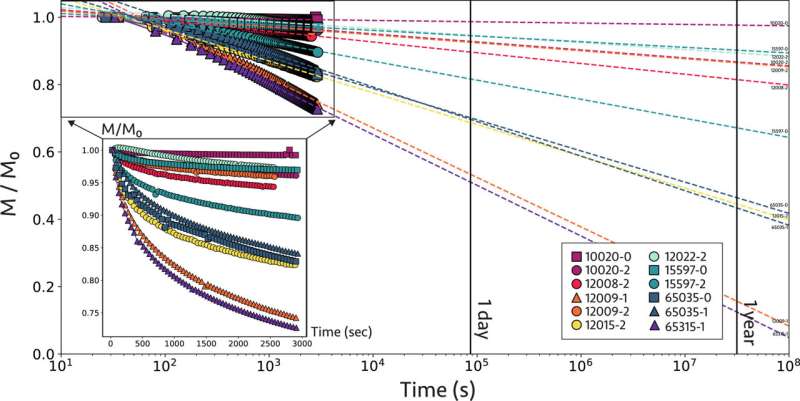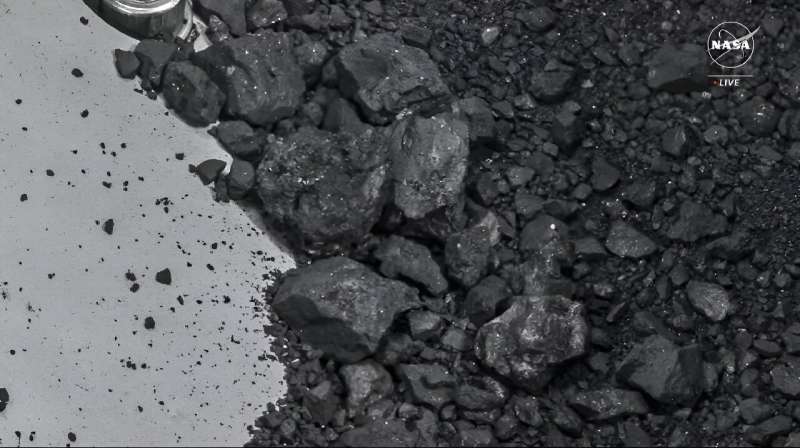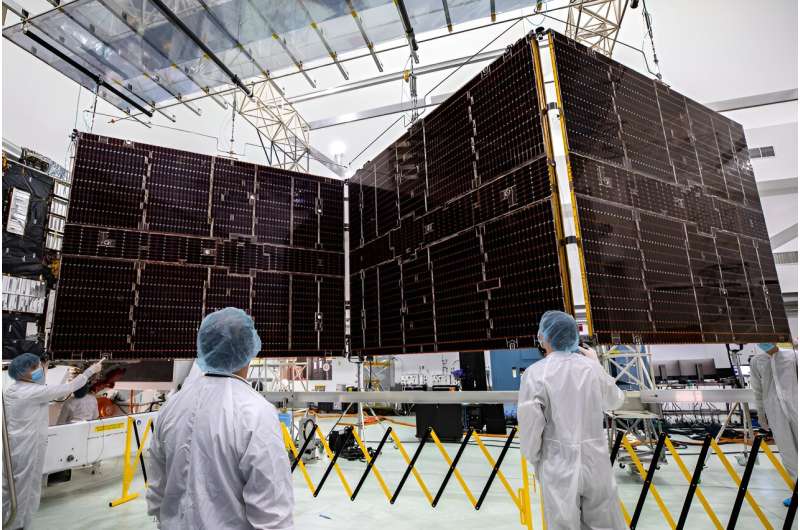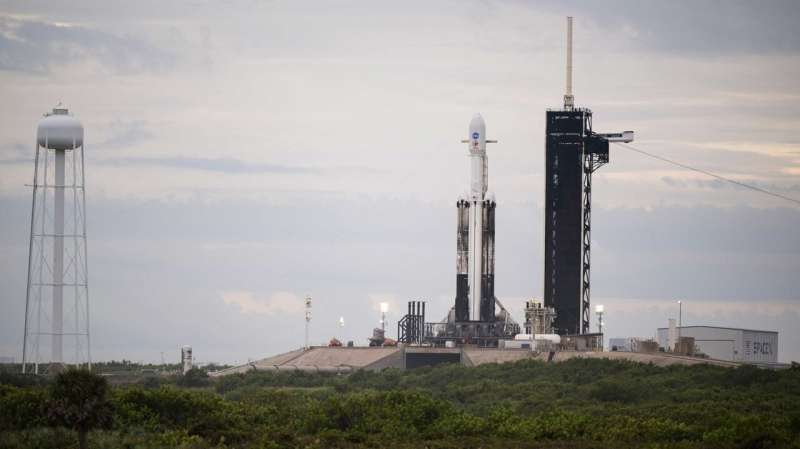
Copernical Team
China announces plan to build world's largest deep-sea neutrino telescope
 China has announced plans to build the world's largest deep-sea neutrino telescope in the western Pacific Ocean.
The project, called "Trident", is expected to be completed in 2030 and will be used to study the universe's most extreme phenomena, such as supernova explosions and black hole eruptions.
Neutrinos are tiny particles that have no electrical charge and very little mass. They
China has announced plans to build the world's largest deep-sea neutrino telescope in the western Pacific Ocean.
The project, called "Trident", is expected to be completed in 2030 and will be used to study the universe's most extreme phenomena, such as supernova explosions and black hole eruptions.
Neutrinos are tiny particles that have no electrical charge and very little mass. They "Starquakes" could explain mystery signals
 Fast radio bursts, or FRBs, are an astronomical mystery, with their exact cause and origins still unconfirmed. These intense bursts of radio energy are invisible to the human eye, but show up brightly on radio telescopes. Previous studies have noted broad similarities between the energy distribution of repeat FRBs, and that of earthquakes and solar flares.
However, new research at the Univ
Fast radio bursts, or FRBs, are an astronomical mystery, with their exact cause and origins still unconfirmed. These intense bursts of radio energy are invisible to the human eye, but show up brightly on radio telescopes. Previous studies have noted broad similarities between the energy distribution of repeat FRBs, and that of earthquakes and solar flares.
However, new research at the Univ Researchers capture first-ever afterglow of huge planetary collision in outer space
 The study, published in Nature, reports the sighting of two ice giant exoplanets colliding around a sun-like star, creating a blaze of light and plumes of dust. Its findings show the bright heat afterglow and resulting dust cloud, which moved in front of the parent star dimming it over time.
The international team of astronomers was formed after an enthusiast viewed the light curve of the
The study, published in Nature, reports the sighting of two ice giant exoplanets colliding around a sun-like star, creating a blaze of light and plumes of dust. Its findings show the bright heat afterglow and resulting dust cloud, which moved in front of the parent star dimming it over time.
The international team of astronomers was formed after an enthusiast viewed the light curve of the Scientists raised key questions of solar wind-moon interaction
 As the nearest celestial body to Earth, Moon's space environment is distinctive to Earth's mainly because of lack of a significant atmosphere/ionosphere and a global magnetic field. From a global perspective, solar wind can bombard its surface, and the solar wind materials cumulated in the soil record the evolution of the Solar System.
Many small-scale remanent magnetic fields are scattere
As the nearest celestial body to Earth, Moon's space environment is distinctive to Earth's mainly because of lack of a significant atmosphere/ionosphere and a global magnetic field. From a global perspective, solar wind can bombard its surface, and the solar wind materials cumulated in the soil record the evolution of the Solar System.
Many small-scale remanent magnetic fields are scattere Asteroid samples from Bennu contain carbon and water
 Initial studies of the 4.5-billion-year-old asteroid Bennu sample collected in space and brought to Earth by NASA show evidence of high-carbon content and water, which together could indicate the building blocks of life on Earth may be found in the rock. NASA made the news Wednesday from its Johnson Space Center in Houston where leadership and scientists showed off the asteroid material for the
Initial studies of the 4.5-billion-year-old asteroid Bennu sample collected in space and brought to Earth by NASA show evidence of high-carbon content and water, which together could indicate the building blocks of life on Earth may be found in the rock. NASA made the news Wednesday from its Johnson Space Center in Houston where leadership and scientists showed off the asteroid material for the Removal of magnetic spacecraft contamination within extraterrestrial samples easily carried out, researchers say

NASA asteroid sample contains life-critical water and carbon

A sample collected from the 4.5-billion-year-old asteroid Bennu contains abundant water and carbon, NASA revealed on Wednesday, offering more evidence for the theory that life on Earth was seeded from outer space.
The discovery follows a seven-year-round-trip to the distant rock as part of the OSIRIS-REx mission, which dropped off its precious payload in the Utah desert last month for painstaking scientific analysis.
With Psyche, a journey to an ancient asteroid is set to begin

If all goes well, on Thursday morning a NASA mission with extensive connections to MIT will be headed to a metal world.
Psyche, a van-sized spacecraft with winglike solar panels, is scheduled to blast off aboard a SpaceX Falcon Heavy rocket tomorrow at 10:16 a.m.
High flying International Space Station experiment pushes boundaries of knowledge

Floating at 250 miles above the planet, the International Space Station (ISS) provides a unique laboratory to conduct pioneering investigations.
By being permanently in orbit, it allows scientists to carry out experiments with the help of on-board astronauts and gain new insights into challenges we face on Earth.
This April, a machine designed at Strathclyde and built by UK-firm QinetiQ, was launched from Cape Kennedy in Florida into orbit on the station for the cutting edge "particle vibration" experiment.
The station, a joint program between U.S., Russia, Japan, Europe (ESA) and Canada, is equipped with a host of modern research equipment.
The experiments needed three months of continuous activities, a period of microgravity that only the ISS can provide.
"Microgravity" removes the effect of gravity to see the effects of other forces that can be hard to reveal on Earth and enabled researchers to test the behavior of solid particles dispersed in a liquid in a variety of operating conditions.
New materials
The trial showed that by heating and shaking complex fluids—liquids that contain fine solid particles or other liquid droplets—in space's microgravity environment, new materials can be created.
Journey to a metal-rich world: NASA's Psyche is ready to launch


